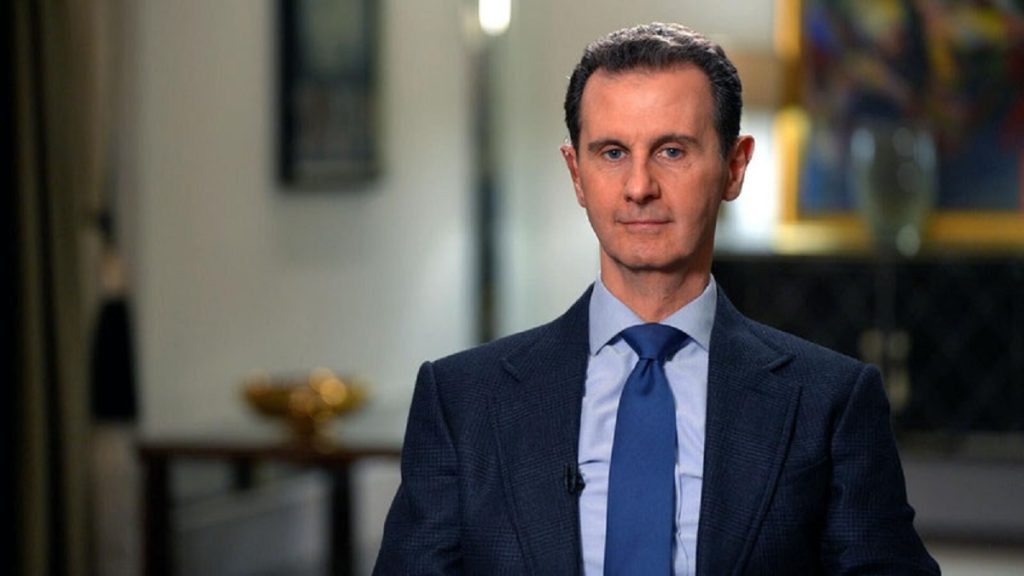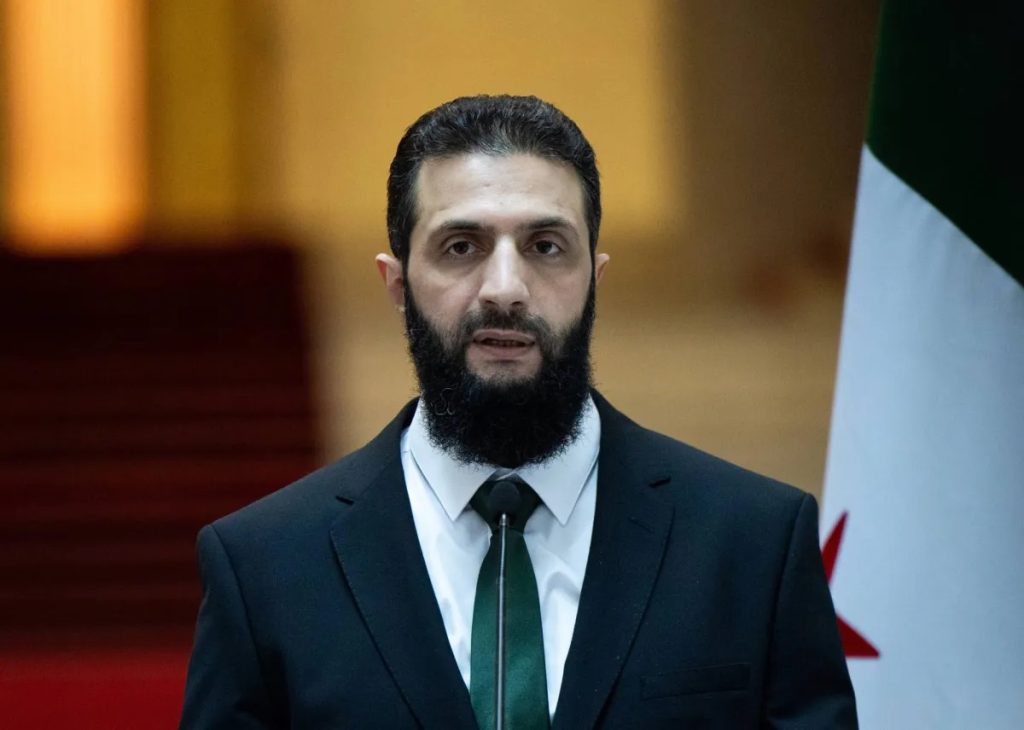Secret Flights and Hidden Fortunes: How Assad Moved His Wealth Before Fleeing Syria?
Exclusive Reuters Investigation Reveals Bashar al-Assad’s Last-Ditch Operation to Smuggle Cash, Assets, and Sensitive Documents Out of Syria

Watan-As his enemies closed in on Damascus, Bashar al-Assad — who ruled Syria with an iron grip for 24 years — used a private jet to smuggle cash, valuables, and secret documents linked to the business network that enabled him to amass his wealth.
According to a narrative built by Reuters from interviews with more than a dozen sources, Yasar Ibrahim, Assad’s top economic advisor, arranged the charter of the jet to transport the president’s valuables, relatives, aides, and palace staff to the United Arab Emirates via four flights.
According to U.S. sanctions notices, Syrian economic experts, and one source within Assad’s business network, Ibrahim — who served as director of the presidential office for financial and economic affairs — played a critical role in establishing a web of entities used by Assad to dominate vast sectors of the Syrian economy, often acting as the president’s frontman.
Assad’s Secret Escape Flights Revealed
Western countries imposed sanctions on Assad after his crackdown on pro-democracy protests in 2011, and later sanctioned Ibrahim for aiding the regime.
A Reuters review of flight tracking records showed that an Embraer Legacy 600 jet made four consecutive flights to Syria over 48 hours before the regime’s collapse. The jet, bearing the identifier C5-SKY, is registered in Gambia.
The fourth flight departed on December 8 from Russia-operated Hmeimim Air Base near Latakia on Syria’s Mediterranean coast, according to flight tracking records, satellite imagery, and a former air force intelligence officer with direct knowledge of the operation. Assad fled to Russia from the same base on the same day.
This is the first report to reveal the operation to extract Assad’s assets from Syria.
Reuters spoke with 14 Syrian sources familiar with the plan, including airport workers, former intelligence and Republican Guard officers, and a source within Assad’s business network.
The agency reviewed WhatsApp messages between Ibrahim’s aides, flight tracking data, satellite images, and company and aircraft ownership records across three continents to reconstruct how Assad’s closest aide coordinated the safe passage of the plane.
The plane carried unmarked black bags containing at least $500,000 in cash, as well as documents, laptops, and hard drives with critical intelligence information about “the Group” — the codename used by Assad and Ibrahim’s aides to refer to a complex network of entities involved in telecommunications, banking, real estate, energy, and other sectors, according to the business network source, the former intelligence officer, and the WhatsApp messages.
Assad’s whereabouts during his regime’s final chaotic days remained a closely guarded secret — even from his closest family. He later obtained political asylum in Russia. Reuters was unable to reach either Assad or Ibrahim for comment. The foreign ministries of Russia and the UAE also did not respond to questions about the operation.
A senior official in the government of new Syrian President Ahmad Al-Shara told Reuters the administration is determined to recover the public funds moved abroad before Assad’s fall, to support Syria’s struggling economy, which is suffering under sanctions and currency shortages.
The official confirmed to Reuters that money had been smuggled out before Assad’s regime collapsed, but did not specify how. Authorities are still working to trace the destination of those funds.
Reuters could not independently verify whether Assad personally oversaw the escape operation. However, several informed sources confirmed it would not have taken place without the president’s approval.

“You Did Not See This Plane”
On December 6, as opposition fighters led by Hay’at Tahrir al-Sham advanced toward the capital, a 13-seat Embraer jet approached Damascus International Airport.
According to six sources familiar with the operation, more than a dozen individuals dressed in the camouflage uniforms of Syria’s Air Force Intelligence — a key tool of political repression under Assad — guarded the VIP terminal and its access route. Four sources confirmed they were present on-site.
FlightRadar24 data showed the jet consistently headed to Al Bateen Airport in Abu Dhabi, which is used by high-level officials and is known for strict privacy protocols.
Three witnesses at the airport said a small number of dark-windowed civilian vehicles approached the area. Two of them — a former intelligence officer and a senior airport official — said the vehicles belonged to the Republican Guard, the elite forces that protected Assad and the presidential palace.
A former senior Republican Guard commander said the Guard’s involvement meant “Bashar (Assad) gave the orders” for the operation. He added that the Guard reported only to its commander, General Talal Makhlouf (a relative of Assad), or to Assad directly.
Airport security chief Ghadeer Ali instructed staff that Air Force Intelligence would handle the flight, according to Mohammad Qayroot, head of ground operations for Syrian Airlines.
Qayroot recounted Ali’s words: “This plane will land, and we will handle it. You did not see this plane.”
According to three Syrian airport officials and the former intelligence officer, Ali, a senior figure in Air Force Intelligence, was taking orders directly from the presidential palace.
Reuters could not reach Ali for comment.
The Final Hours
Initially, the jet departed Dubai on December 6 and landed in Damascus around noon local time. It then flew to Al Bateen and returned to Damascus shortly after 10 PM.
An airport worker among five interviewed said: “Vehicles would approach the plane each time it landed, remain briefly, then depart before it took off again.”
Ali informed Air Force Intelligence staff that palace personnel and Assad’s relatives, including some younger individuals, were scheduled to board the first two flights that left Damascus on December 6. Those flights also carried cash, according to the former intelligence officer who was present.
Reuters could not access passenger lists or cargo manifests for the four flights to verify their contents.
The second flight also transported paintings and small sculptures, the source said.
On December 7, the jet returned to Damascus around 4 PM and departed for Al Bateen an hour later, carrying bags of cash, hard drives, and electronic devices with information about Assad’s business network, according to the intelligence officer and the business network source.
The data reportedly included financial records, meeting minutes, company and property ownership documents, partnership details, wire transfers, and information about offshore companies and accounts.
This time, UAE embassy vehicles were seen near the VIP terminal before the plane took off, according to the intelligence officer — indicating the UAE was aware of the operation.

Diversion to the Russian Base
By early December 8, opposition fighters had reached Damascus, prompting Assad to flee to his coastal stronghold in Latakia in coordination with Russian forces. Damascus airport ceased operations.
Just after midnight, the jet departed Al Bateen for the last time. After flying over Homs around 3 AM local time, it disappeared from tracking systems for about six hours, then reappeared over Homs and returned to Abu Dhabi, according to FlightRadar24 data.
The former intelligence officer said the plane had landed at Hmeimim Air Base in Latakia during that window.
A satellite image captured by Planet Labs at 9:11 AM showed the jet on the tarmac at Hmeimim.
Reuters verified the Embraer jet’s identity — registration C5-SKY — by comparing its size, shape, and tracking data. It was the only private jet flying into and out of Syria between December 6 and 8.

Departure of Assad’s Inner Circle
On the flight from Hmeimim was Ahmad Khalil Khalil, a close aide to Ibrahim and an operative within Assad’s business empire, according to the former intelligence officer, the business network source, and the WhatsApp messages. Khalil is under Western sanctions for supporting the former regime through managing multiple companies.
The sources said he arrived at the Russian base in an armored vehicle belonging to the UAE embassy, carrying $500,000 in cash.
He had withdrawn the amount two days earlier from an account at Syria International Islamic Bank, the sources said.
The business network source added the account belonged to Al-Burj Investment Company, based in Damascus. According to Syria Report — a business intelligence platform citing official Syrian records from 2018 — Ibrahim owns 50% of the company.
Reuters could not reach Khalil via Facebook for comment.
Syria International Islamic Bank and Al-Burj Investment also did not respond to emailed requests for comment.
According to the business network source and a former Syrian civil aviation official, the Embraer jet was operating under a “dry lease” — where the aircraft is provided by the owner without crew, maintenance, insurance, or ground handling.
Reuters could not determine who operated the flights.
Ibrahim reportedly arrived in Abu Dhabi on December 11.
President Ahmad Al-Sharaa declined to comment on the jet during a Reuters interview.






